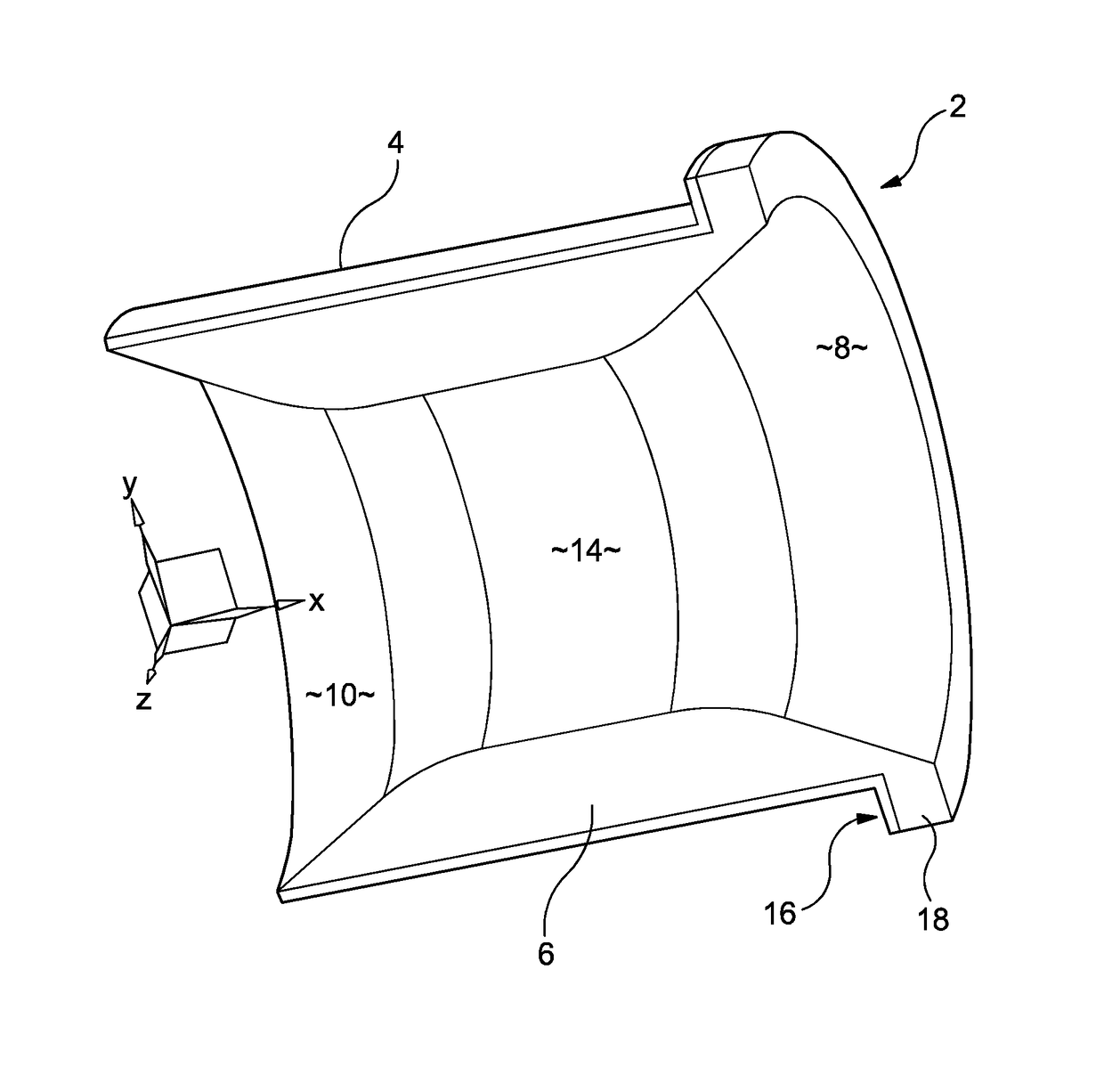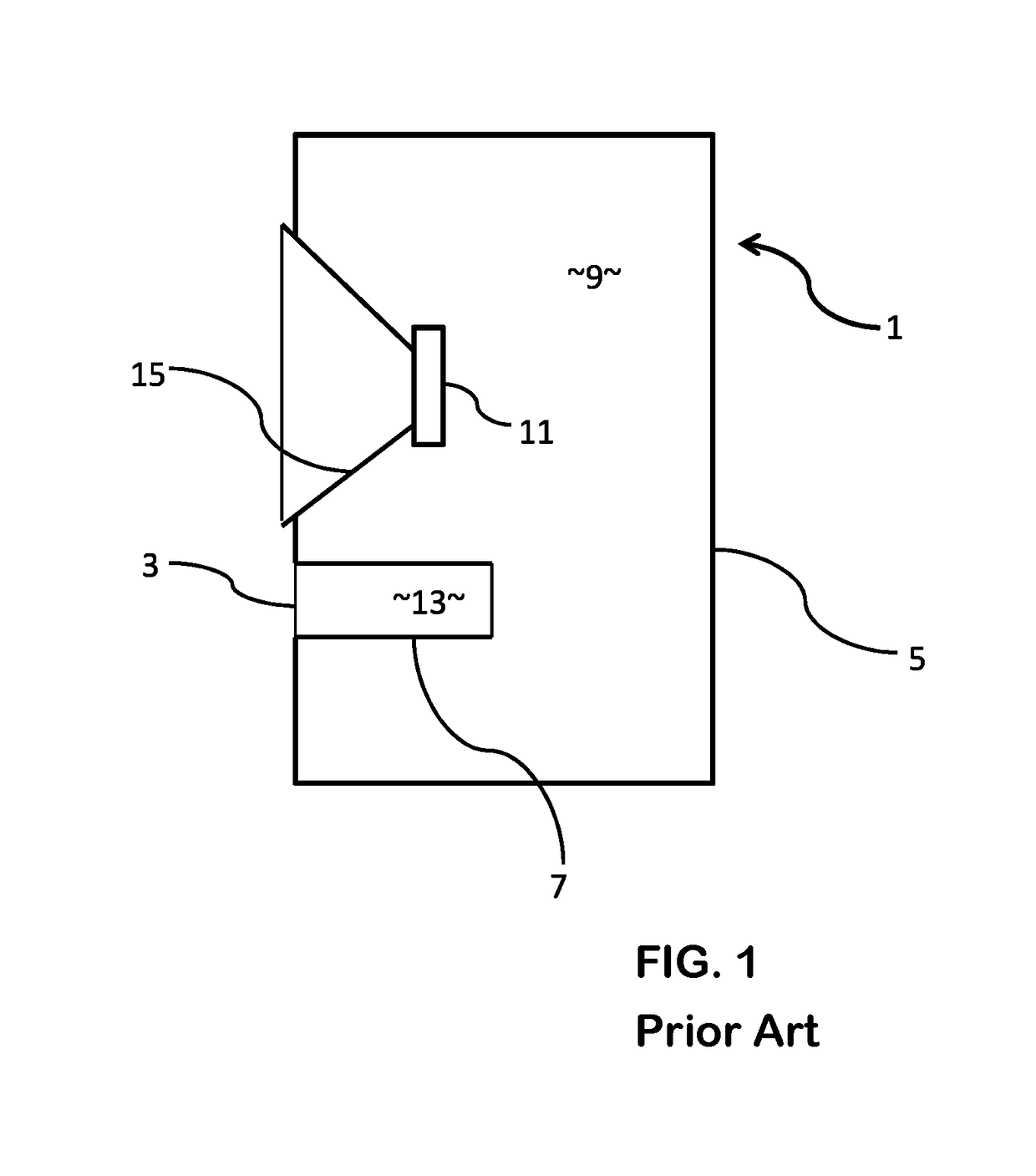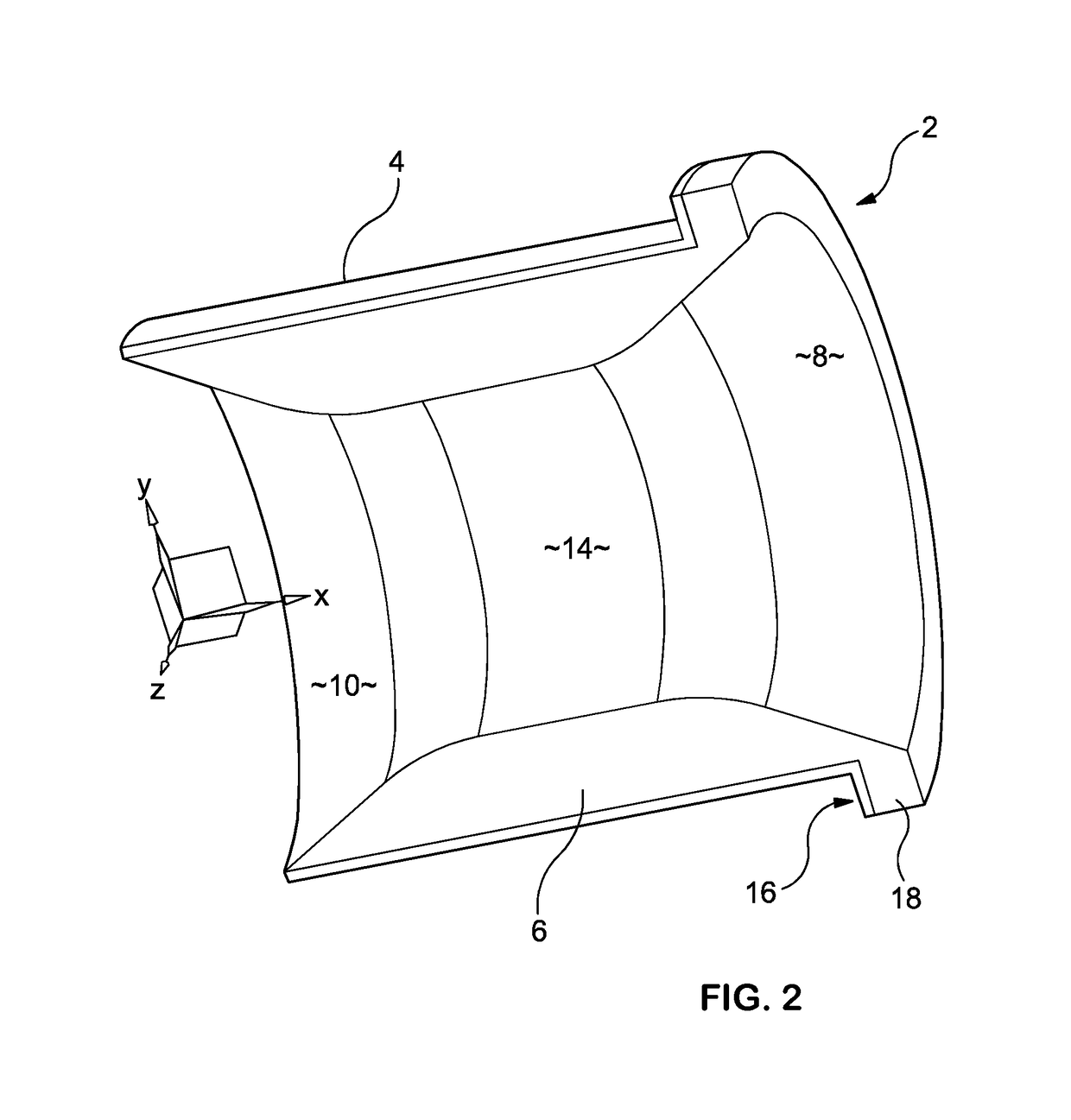Loudspeaker bass reflex system
a loudspeaker and reflex technology, applied in the field of reflex-type loudspeakers, can solve the problems of reducing the bass output of the port, bungs introduce turbulence and resistive losses, and are more crude than crude, so as to facilitate the extraction of the insert by the user, and the effect of easy manufacturing
- Summary
- Abstract
- Description
- Claims
- Application Information
AI Technical Summary
Benefits of technology
Problems solved by technology
Method used
Image
Examples
Embodiment Construction
[0019]FIG. 2 is an isometric, cross-sectional schematic of an arrangement 2 comprising an acoustic insert 6 seated within an outer tube 4 which is fitted to the enclosure of a loudspeaker (not shown). The acoustic insert 6 and the outer tube 4 together form an open ended, cylindrical tube, with a first end 8 opening at the wall of the loudspeaker enclosure and a second end 10 inside the enclosure. The insert flares outwardly at the first and second ends, with a central portion 14 of smaller radius (around the X axis shown) than at the two ends. The first end of the outer tube 4 has a lip 16 which engages with the wall of the loudspeaker enclosure as is known in the art. The insert, which is made of low density foam material, is also formed with a matching lip 18, which seats on the lip 16 when the insert is fully inserted within the outer tube 4; this prevents the insert from being pushed too far inside the outer tube, and instead ensures that the insert 6 is in the correct longitud...
PUM
 Login to View More
Login to View More Abstract
Description
Claims
Application Information
 Login to View More
Login to View More - R&D
- Intellectual Property
- Life Sciences
- Materials
- Tech Scout
- Unparalleled Data Quality
- Higher Quality Content
- 60% Fewer Hallucinations
Browse by: Latest US Patents, China's latest patents, Technical Efficacy Thesaurus, Application Domain, Technology Topic, Popular Technical Reports.
© 2025 PatSnap. All rights reserved.Legal|Privacy policy|Modern Slavery Act Transparency Statement|Sitemap|About US| Contact US: help@patsnap.com



